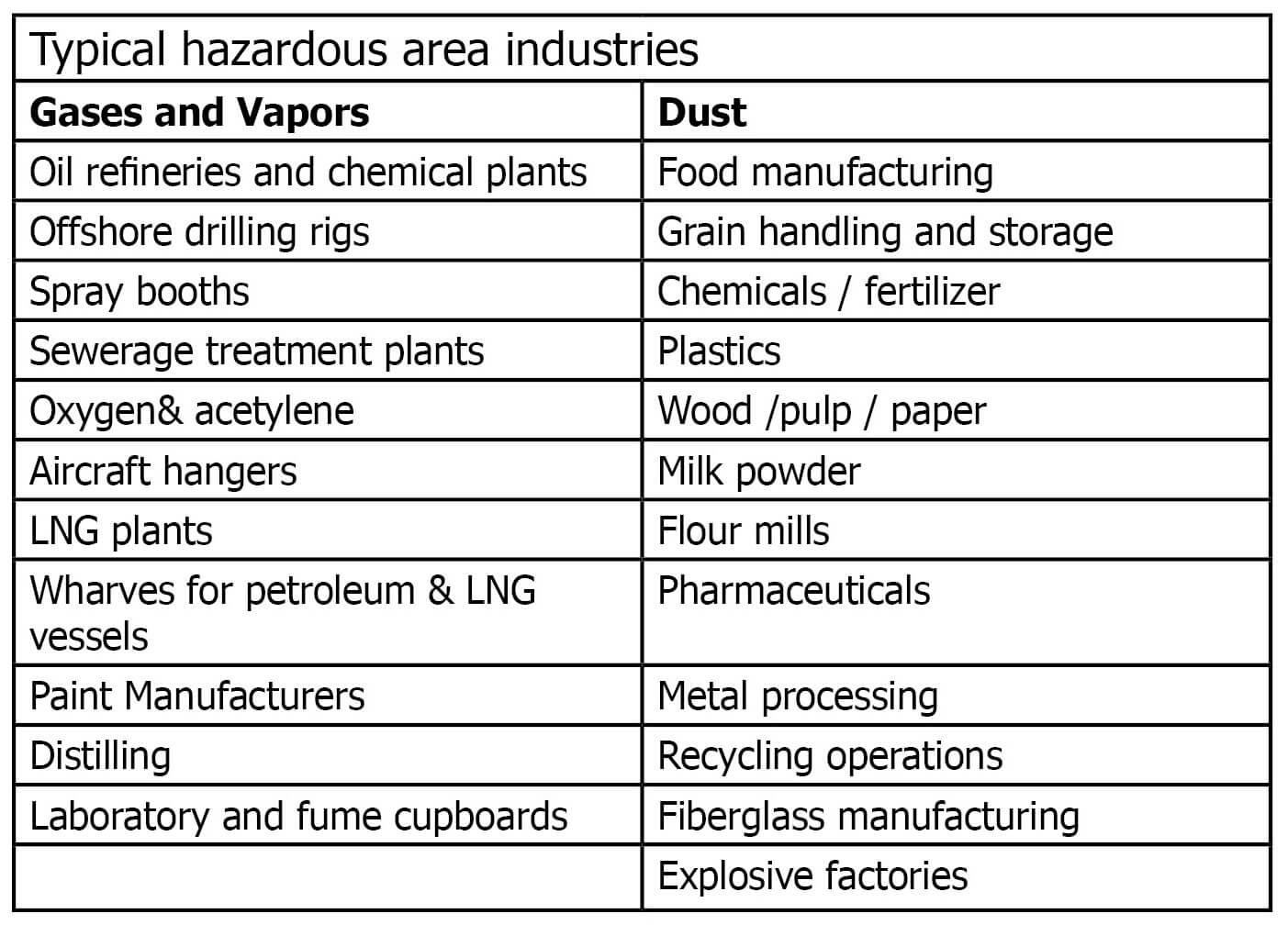How Roar Solutions can Save You Time, Stress, and Money.
How Roar Solutions can Save You Time, Stress, and Money.
Blog Article
Unknown Facts About Roar Solutions
Table of ContentsSome Known Details About Roar Solutions Get This Report about Roar SolutionsThe 15-Second Trick For Roar Solutions
In order to shield installations from a potential explosion a technique of analysing and identifying a possibly hazardous area is called for. The purpose of this is to make sure the correct choice and installment of devices to inevitably protect against an explosion and to guarantee security of life.
(http://prsync.com/roar-solutions/)
No equipment needs to be mounted where the surface temperature level of the tools is higher than the ignition temperature level of the given threat. Below are some common dirt hazardous and their minimal ignition temperature. Coal Dirt 380C 225C Polythene 420C (melts) Methyl Cellulose 420C 320C Starch 460C 435C Flour 490C 340C Sugar 490C 460C Grain Dirt 510C 300C Phenolic Resin 530C > 450C Aluminium 590C > 450C PVC 700C > 450C Soot 810C 570C The possibility of the danger existing in a concentration high adequate to trigger an ignition will certainly differ from place to area.
In order to identify this threat an installment is divided into areas of danger depending upon the amount of time the unsafe is present. These areas are referred to as Areas. For gases and vapours and dirts and fibers there are 3 areas. Zone 0 Zone 20 A hazardous ambience is extremely most likely to be present and might exist for extended periods of time (> 1000 hours per year) or perhaps continuously Area 1 Area 21 An unsafe atmosphere is feasible yet not likely to be existing for extended periods of time (> 10 450 C [842 F] A classification of T6 indicates the minimal ignition temperature is > 85 C [185 F] Harmful location electric tools maybe developed for usage in greater ambient temperatures. This would certainly suggested on the score plate e.g. EExe II C T3 Ta + 60C( This suggests at 60C ambient T3 will certainly not be surpassed) T1 T1, T2, T3, T4, T5, T6 T2 T2, T3, T4, T5, T6 T3 T3, T4, T5, T6 T4 T4, T5, T6 T5 T5, T6 T6 T6 A T Class rating of T1 means the optimum surface temperature created by the tool at 40 C is 450 C. Thinking the connected T Course and Temperature level score for the equipment are proper for the area, you can always make use of an instrument with a more strict Division ranking than needed for the area. There isn't a clear response to this question. It actually does rely on the sort of equipment and what repair work need to be accomplished. Equipment with certain test procedures that can't be done in the area in order to achieve/maintain third party ranking. Have to return to the manufacturing facility if it is before the devices's solution. Field Repair Work By Authorised Personnel: Complex testing might not be called for nevertheless specific procedures might need to be adhered to in order for the tools to keep its third event ranking. Authorised workers need to be employed to carry out the work appropriately Repair service must be a like for like replacement. New part need to be considered as a straight replacement needing no special testing of the equipment after the repair is full. Each piece of devices with a harmful ranking ought to be evaluated individually. These are detailed at a high degree listed below, however, for even more detailed info, please refer directly to the guidelines.
Excitement About Roar Solutions
The tools register is a detailed data source of tools documents that includes a minimum set of fields to determine each thing's area, technical specifications, Ex classification, age, and environmental information. The ratio of In-depth to Close assessments will be identified by the Devices Danger, which is examined based on ignition threat (the likelihood of a source of ignition versus the chance of a combustible environment )and the dangerous location category
( Zone 0, 1, or 2). Implementing a robust Risk-Based Examination( RBI )approach is critical for ensuring compliance and safety and security in handling Electric Devices in Hazardous Locations( EEHA).
Getting The Roar Solutions To Work

In regards to eruptive threat, a harmful area is an atmosphere in which an eruptive environment exists (or may be anticipated to be present) in quantities that need special precautions for the building, setup and use of equipment. high voltage courses. In this write-up we check out the obstacles faced in the work environment, the threat control measures, and the called for expertises to function safely
These materials can, in certain problems, form eruptive atmospheres and these can have significant and awful consequences. Many of us are acquainted with the fire triangular eliminate any kind of one of the three components and the fire can not happen, however hazardous area course what does this mean in the context of harmful locations?
In the majority of instances, we can do little about the levels of oxygen in the air, yet we can have substantial impact on sources of ignition, for example electric equipment. Harmful locations are documented on the harmful location classification drawing and are identified on-site by the triangular "EX LOVER" indicator. Here, among various other key information, areas are split into three kinds depending upon the risk, the chance and duration that an explosive atmosphere will certainly exist; Area 0 or 20 is deemed the most dangerous and Area 2 or 22 is deemed the least.
Report this page